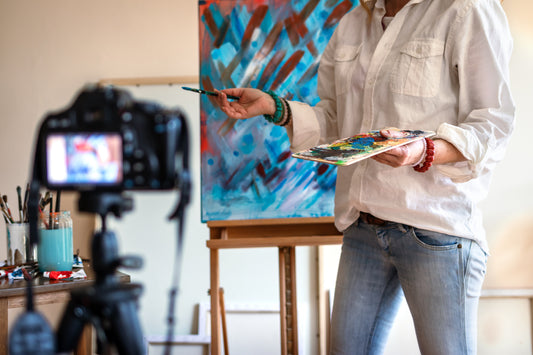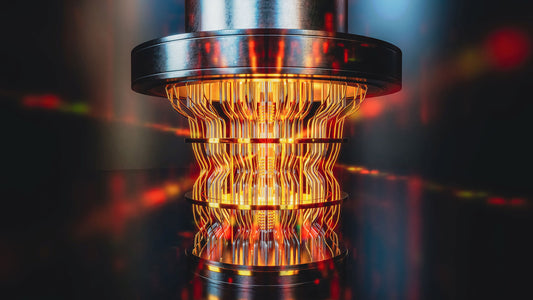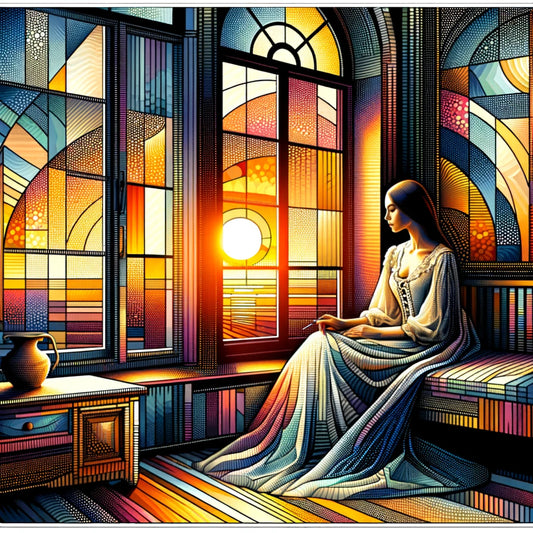The intersection of art and technology has always been a source of rich innovation and unexpected evolution. In recent years, a new player has emerged on the technological stage, promising to redefine this relationship once more: quantum computing. Unlike traditional computing, which processes bits in a binary state (either 0 or 1), quantum computing uses quantum bits or qubits, which can represent and process a large amount of information simultaneously. This capability is not just transforming industries like cryptography, medicine, and finance; it's also poised to make a significant impact on the world of art.
For centuries, artists have embraced new tools and technologies, from the perspective-altering capabilities of the camera obscura to the limitless possibilities offered by digital software. Now, as the near reality of quantum computing looms closer, the art world stands on the brink of another monumental shift. This article will explore how this emerging technology could affect art creation, interpretation, and appreciation, heralding a new era where art and science converge in unprecedented ways.
Understanding Quantum Computing
Quantum computing represents a monumental leap beyond traditional computing. At its core, this technology leverages the principles of quantum mechanics, the science that governs the behavior of matter and energy at the smallest scales. Unlike classical computing, which uses bits as the smallest unit of data (each distinctly being a 0 or a 1), quantum computing employs quantum bits, or qubits. These qubits have the peculiar ability to exist in multiple states at once, thanks to the quantum phenomena known as superposition and entanglement.
Superposition allows a qubit to be both 0 and 1 simultaneously, vastly increasing the amount of information that can be processed at once. Entanglement, another quantum effect, means that the state of one qubit can depend on the state of another, no matter how far apart they are. This interconnection allows quantum computers to solve complex problems much faster than their classical counterparts.
The implications of quantum computing are profound. It can process and analyze vast datasets far beyond the capacity of current computers, solve intricate calculations in a fraction of the time, and even perform tasks that are currently considered impossible. Industries like pharmaceuticals, aerospace, and energy are poised for revolutionary changes thanks to quantum computing.
But what does this mean for art? The quantum leap in computing power can transform how artists create, how we analyze and preserve art, and even the types of art that are considered possible. From generating intricate patterns no human could design to analyzing and replicating the exact colors and techniques of historical painters, quantum computing opens new frontiers in art just as it does in science.
By merging the abstract, probabilistic world of quantum mechanics with the sensory, emotional world of art, we stand on the brink of a new era where the boundaries between the conceivable and the inconceivable blur.
Quantum Computing in the Realm of Art
The advent of quantum computing is starting to ripple through the art world, catalyzing new forms of creation and ways of thinking about art. This technology is not just changing the tools available to artists; it's also reshaping the conceptual foundations of what art can be.
One of the most direct impacts of quantum computing in art is the creation of algorithm-generated artwork. This isn't entirely new – algorithms have been used to create visual art for decades. However, quantum algorithms elevate this practice to new heights. They enable the creation of highly complex, detailed, and unique patterns and forms, impossible for traditional algorithms to compute within a human lifetime. These quantum-inspired pieces challenge our perception of art, pushing the boundaries between the digital and the physical, the intentional and the random.
Beyond creation, quantum computing offers revolutionary ways to analyze and preserve art. High-level pattern recognition, powered by quantum computing, can assist in authenticating artworks and detecting forgeries in ways previously unimaginable. Moreover, quantum computing can simulate the chemical properties of materials used in art, aiding in the preservation and restoration of historical artworks. This could provide insights into the techniques and materials used by ancient artists, revealing lost histories and methodologies.
Furthermore, the interaction between quantum computing and art is fostering new interdisciplinary collaborations. Artists and scientists are coming together to explore the aesthetic possibilities of quantum data visualization, turning complex quantum information into visual, tangible forms. This fusion not only democratizes highly complex quantum concepts but also opens up new avenues for artistic expression.
As quantum computing continues to evolve, its integration into the art world promises to break conventional barriers, introducing a new era where technology and creativity converge in unforeseen and fascinating ways.
Potential Impacts on Art Creation and Interpretation
The influence of quantum computing extends beyond the practical aspects of art creation and preservation, venturing into the realms of conceptual and interpretative changes in art. This emerging technology invites artists and viewers alike to reconsider what art is and what it could be.
Firstly, the integration of quantum computing in art creation heralds a new genre of art that is inherently multidimensional and dynamic. Traditional art, while varied and complex, is bound by physical and temporal constraints. Quantum art, however, can exist in multiple states and interpretations simultaneously, much like the quantum states themselves. This could lead to art that changes based on the viewer's perspective or even their physical presence, creating a more interactive and personalized experience.
Moreover, quantum computing can transform the interpretation of art by providing deeper insights into the complexities and nuances of artworks. By analyzing patterns, colors, and forms at an unprecedented scale and depth, quantum technologies can uncover hidden meanings and connections, enriching the viewer's understanding and appreciation of art. This analytical power, combined with AI, could also lead to the creation of more nuanced and sophisticated art criticism tools, altering the way art is evaluated and discussed.
Furthermore, the unpredictable and non-linear nature of quantum computing parallels certain modernist and postmodernist art movements, which challenge linear narratives and fixed interpretations. This technological shift could inspire artists to explore more complex, layered, and fluid forms of expression, reflecting the probabilistic nature of quantum mechanics.
As quantum computing becomes more accessible, we may see an explosion of creativity in the art world, with artists leveraging this technology to explore new forms of expression and interaction. The result could be a profound shift in how we create, perceive, and interact with art, pushing the boundaries of imagination and interpretation in unprecedented ways.
Challenges and Ethical Considerations
While the fusion of quantum computing and art opens exciting possibilities, it also presents unique challenges and ethical considerations. One significant challenge is the digital divide; as quantum technologies advance, there's a risk that only a select few will have access to these powerful tools, potentially widening the gap between established and emerging artists or between wealthy and less affluent communities.
Another ethical concern is the question of authorship and authenticity in art. As algorithms become more sophisticated and autonomous, determining the 'artist' behind a piece becomes increasingly complex. Is the creator the programmer, the machine, or the algorithm itself? This dilemma challenges traditional notions of creativity and ownership in art.
Moreover, the potential for deepfakes and highly realistic forgeries powered by quantum computing poses a threat to the integrity of the art market and historical archives. Ensuring the authenticity of artworks becomes exponentially more challenging, necessitating new standards and technologies for verification.
Finally, there's the philosophical debate about the role of human emotion and imperfection in art. As machines begin to play a larger role in the creative process, there's a risk that art could lose its human touch, becoming
more a product of mathematical algorithms than human experience and emotion.
These challenges require careful consideration and ethical guidelines to ensure that the integration of quantum computing into the art world enhances rather than diminishes the human experience of art.
Future Prospects
The relationship between quantum computing and art is just beginning to unfold, promising a future rich with innovation and new expressive possibilities. As quantum technology becomes more accessible and integrated into our daily lives, we can anticipate a wave of quantum-inspired art that challenges our perceptions and enriches our cultural landscape.
Artists, traditionally at the forefront of exploring new media and ideas, will likely embrace quantum computing to push the boundaries of what art can be. This could lead to entirely new art forms that incorporate quantum principles, such as superposition and entanglement, into the visual, auditory, and spatial dimensions of art.
Furthermore, collaborations between artists, scientists, and technologists are expected to deepen, fostering a cross-pollination of ideas that will spur both artistic and scientific breakthroughs. These partnerships could help demystify quantum computing for the general public, making complex concepts more accessible and understandable through visual and experiential means.
Looking ahead, the fusion of art and quantum computing could also play a crucial role in shaping our societal and cultural responses to this new technology. By reflecting on and critiquing the implications of quantum computing through art, society can better navigate the ethical, philosophical, and practical challenges this revolutionary technology presents.
In this ever-evolving landscape, one thing remains clear: the nexus of quantum computing and art will continue to offer vast, uncharted territories for exploration, questioning, and creation.





